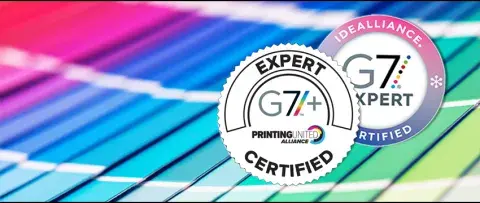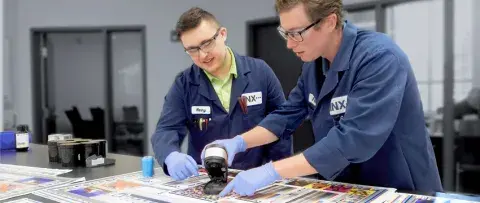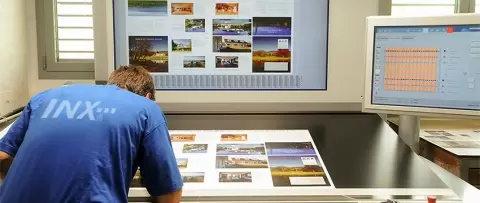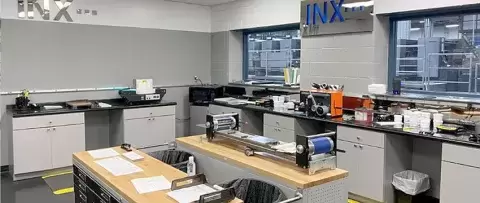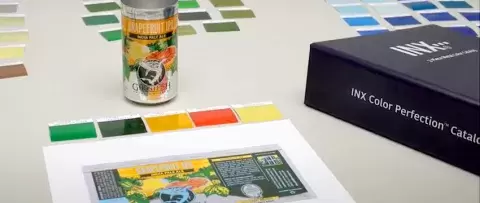Unlocking the Brilliance of Expanded Color Gamut Inks
Expanded color gamut (ECG) inks offer substantial benefits over traditional four-color printing. ECG inks are revolutionizing the way colors are reproduced on various substrates, enhancing visual appeal and accuracy of printed materials.
What are extended color gamut inks?
Extended gamut inks are specialized printing inks that expand the traditional color range of the CMYK (cyan, magenta, yellow, and black) printing process. By incorporating additional colors such as orange, green, and violet, these inks can reproduce a wider spectrum of colors, enhancing the vibrancy and accuracy of printed images. This enhancement not only increases the vibrancy and accuracy of printed images but also offers a variety of benefits across printing and graphic design.
ECG inks enhance color reproduction
One of the most significant advantages of expanded color gamut inks is their ability to reproduce a broader range of colors with greater accuracy. Traditional four-color printing relies on the Cyan, Magenta, Yellow, and Black (CMYK) color model, which often struggles to accurately reproduce certain hues, particularly vibrant oranges, greens, and purples. As well as subtle shades and deep rich colors. ECG inks, address this limitation by incorporating additional ink colors, such as orange, green, and violet into the printing process. This expanded palette allows for more precise color matching and the reproduction of colors that were previously unattainable, resulting in richer, more vibrant, and true-to-life printed images.
Using ECG inks, a printer can achieve color for 90% percent of Pantone standards, compared to 40% with traditional CMYK inks.
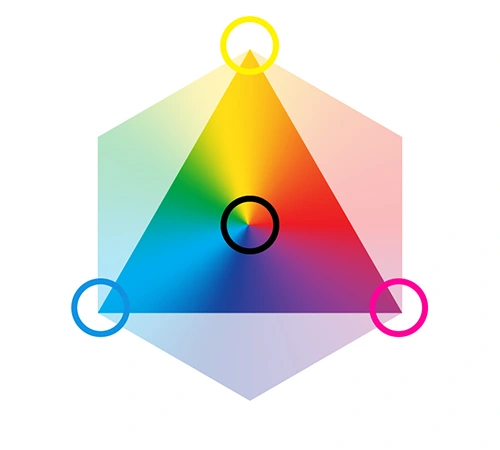
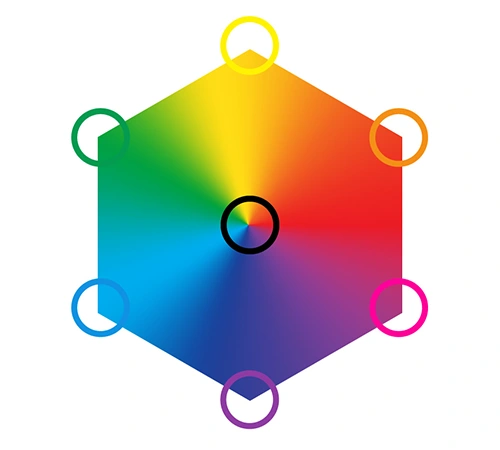
A wider color range provides more consistent results
Consistency is key in printing, particularly in large print runs or when reproducing branded materials. Expanded color gamut inks offer improved color consistency across different printing jobs, substrates, and printing conditions. With a wider range of colors available, printers can achieve more consistent results, reducing the need for frequent color adjustments and ensuring that printed materials maintain their intended appearance regardless of the printing method or substrate used. This consistency is crucial for maintaining brand integrity and ensuring that all printed materials accurately reflect the brand's visual identity.
CONTACT
Solutions to reduce costs, speed products to market, and improve clients' brand image.
Contact a Color Management Rep
More colors allows for greater design flexibility
Expanded color gamut inks create new possibilities for designers by providing access to a broader spectrum of colors. Designers no longer need to compromise on color accuracy or vibrancy due to the limitations of traditional CMYK printing. Instead, they can fully unleash their creativity and explore new design concepts with the confidence that their vision can be faithfully reproduced in print. Whether it's creating stunning photographic images, intricate illustrations, or bold graphics, expanded color gamut inks give designers the tools they need to bring their ideas to life with enhanced vibrancy and precision.
Enhanced image quality with finer gradations of color
Expanded color gamut (ECG) inks not only improve color reproduction but also enhance overall image quality. The finer gradations of color and smoother transitions between hues contribute to sharper, more detailed prints with greater depth and dimensionality. Whether printing high-resolution photographs, intricate patterns, or fine text, expanded color gamut inks deliver superior image quality that captivates and engages viewers. This results in prints that are not only more vibrant but also exhibit a higher level of clarity and detail, making them particularly effective for visually demanding applications.


Reduced environmental impact
Expanded color gamut printing isn't just good for business—it's also environmentally friendly. By reducing the need for spot colors and minimizing ink waste, ECG inks help lower overall ink consumption and reduce environmental impact. Additionally, the improved color accuracy and consistency of ECG printing can lead to fewer reprints and less paper waste, further reducing the carbon footprint of printing operations. This eco-friendly approach not only supports sustainability initiatives but also enhances the efficiency and cost-effectiveness of the printing process, making it a responsible choice for both businesses and the environment.
Simplified inventory management
Expanded color gamut (ECG) printing significantly reduces the need for additional spot colors, streamlining inventory management. Traditional four-color process often requires the addition of special spot colors for individual jobs. Estimating the quantity of spot colors necessitates ordering excess, to avoid downtime, leading to an accumulation of unused spot colors after job completion. This results in aging inventory, occupying valuable space until the same color is needed again or it can be repurposed.
As the number of jobs increases, the required number of spot colors grows, further complicating inventory management. By contrast, a seven-color ECG system can drastically reduce the reliance on spot colors simplifying inventory and reducing storage requirements. This approach not only optimizes storage space but also reduces waste and enhances overall operational efficiency.
Conclusion
Expanded color gamut inks represent a groundbreaking advancement in the world of printing, offering enhanced color reproduction, improved consistency, greater design flexibility, and superior image quality. As printers and designers continue to adopt this technology, the possibilities for creative expression and visual communication expand dramatically. ECG inks not only empower businesses and creators to produce more vibrant and accurate prints but also support sustainable practices by reducing ink waste and simplifying inventory management.
Whether producing marketing materials, packaging designs, or artistic prints, expanded color gamut inks empower businesses and creators to make a lasting impression with every print. This technology bridges the gap between digital design and physical reproduction, ensuring that the vision of the designer is faithfully and vividly brought to life. As the industry continues to embrace ECG printing, we can expect a future where printed materials are more captivating, consistent, and environmentally friendly.






